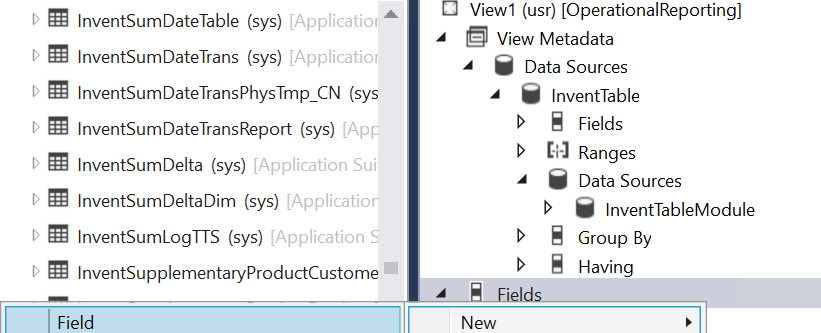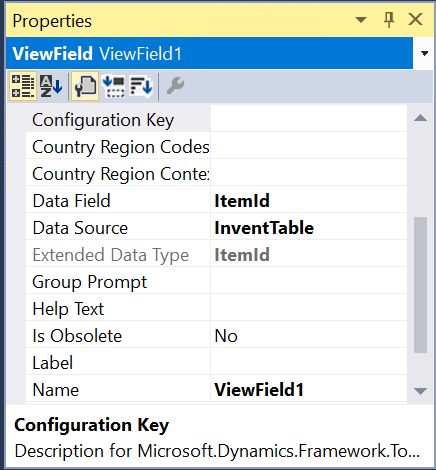In Microsoft Dynamics AX 2012, developers were able to open a second copy of the Application Object Tree (AOT), or simply open a single AOT object or element of the object in a new window, to position the windows side by side. This made drag-and-drop functionality easier to use. We could even multi-select several fields from one of the object copies to drag and drop on the other copy to modify the object contents. I miss this feature, and in this article, we will walk through some of my attempts to replicate the functionality.
First Attempt: Field Selections
For my first attempt, let’s think about how fields are selected. In Visual Studio it is possible to select a field, or multiple fields, from a Metadata data source and drag that field or fields down past all the other data source fields to drop on the view Fields node. However, when the data source has many fields, the drag and drop is tricky; the mouse needs to force the scroll to happen past the bottom of the visible page to arrive at the view Fields node.
In many other development circumstances, this complication doesn’t matter because you can drag what you need from the Application Explorer onto the elements of the object you’re creating or editing. For example, when creating tables, data types can be dragged from the Application Explorer on to the table in the Modeling pane. However, when you are creating views that contain tables with many fields, you cannot drag from the Application Explorer to the Fields node of the view you are creating. In the Application Explorer copy of the view (once it is synchronized), drilling down into the Metadata to the Fields node of a data source, the fields of the data source are not displayed, and that node is empty.
Second Attempt: Floating the View
For my second attempt, let’s think about how to float the view. It would be helpful if two floated windows of the same element could exist side by side for this purpose. However, Visual Studio doesn’t support opening another copy of the same element to float beside it.
Third Attempt: Code Editor
For my third attempt, let’s think about how the code editor works. The code editor supports splitting the Editor pane into two sections of the same code at the same time, one above the other. The two sections have separate scrollbars so you can view multiple sections of the code at the same time. That is done by clicking on the split button in the toolbar. I considered whether the Modeling pane could be split in the same way to give two independent views of the same AOT object to facilitate drag and drop either via side-by-side or one-above-other showing different parts of the metadata in the independent views. Unfortunately, there doesn’t appear to be a way to do this. The split menu option is disabled.
Workaround Solution: Add View Fields By Right-Click
The alternative that works is to add each field one by one by right clicking on the view Fields node:

Then in the Properties pane set the properties for the Data Field and the Data Source (which auto-populates the Extended Data Type.

I always found drag and drop to be so convenient and quick to build objects for Dynamics AX. The workaround does work in Dynamics 365, but it takes a bit more time. I guess it is not so easy for Microsoft to maintain features of the AOT in former releases. But on the bright side, developing in Visual Studio is ever so much more familiar to developers who have never programmed for Dynamics before. Our employers can more easily get new developers working efficiently.
Want to learn more? Visit academy.rsmsus.com for eLearning courses and information about our hosted training classes in Denver! Or Contact our Microsoft Dynamics experts at RSM (855) 437-7201.
By: Mary Ann Hand

 RSMUS.com
RSMUS.com